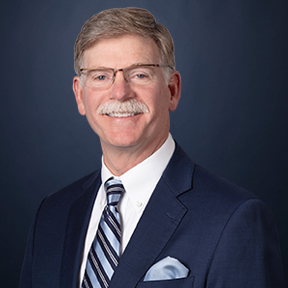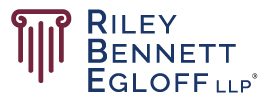The Department of Labor Issues Regulations Implementing New Leave of Absence Law
This is the fifth in a series of articles in response to the COVID-19 federal legislation and benefit programs. This article discusses the regulations — published and effective today, April 6, 2020—by the U.S. Department of Labor (“DOL”) as required by the Families First Coronavirus Response Act (“FFCRA”) signed by the President on March 18, 2020. We previously reported on the FFCRA in our first article in this series. A link to that article entitled Financial Assistance Resources for Businesses Affected by COVID-19 is HERE. The DOL regulations and their summary (125 pages) may be found online at the Federal Register, HERE.
The regulations provide two new acronyms: EPSLA (“The Emergency Paid Sick Leave Act”) and the EFMLEA (“The Emergency Family and Medical Leave Expansion Act”). Although these separately identified provisions of the FFCRA are included in the Act, the regulations distinguish these provisions of the new laws and assist in understanding and implementing their provisions.
EPSLA
Generally, the EPSLA requires a covered employer (fewer than 500 employees) to provide an eligible employee paid sick leave when the employee is unable to work for six potential reasons related to COVID-19 when the employee:
- Is subject to a government quarantine or isolation order;
- Has been advised by a health care provider to self-quarantine;
- Is experiencing symptoms and is seeking a medical diagnosis;
- Is caring for an individual who is subject to a government quarantine or isolation order or has been advised by a health care provider to self-quarantine;
- Is caring for his or her son or daughter whose school or place of care has been closed; or
- Is experiencing any other substantially similar condition specified by the Secretary of Health and Human Services.
Under the EPSLA, the DOL has authority to exempt certain employers with fewer than 50 employees from providing paid sick leave to an employee who is unable to work because the employee is caring for his or her son or daughter whose place of care has been closed, when compliance would “jeopardize the viability of the business as a going concern.” The exemption is discussed below. The EPSLA applies to employees regardless of how long they have been employed, but it allows employers to exclude employees who are health care providers or emergency responders from taking paid sick leave.
The EPSLA entitles full-time covered employees to receive up to 80 hours of paid sick leave and entitles part-time employees to receive up to the number of hours they work on average over a two-week period, although special rules may apply to part-time employees with varying schedules. For an employee who is taking leave for reasons 1, 2, or 3 above, paid sick leave is at the greater of the employee’s regular rate of pay or the applicable minimum wage, up to $511 per day and $5,110 in the aggregate. An employee who is taking leave for reasons 4, 5, or 6 above is entitled to 2/3 of the employee’s regular rate up to $200 per day and $2,000 in the aggregate. The employer may not require an employee to use other paid leave provided by the employer before the employee uses the allowed paid sick leave. The EPSLA provides for enforcement proceedings and penalties for failure to comply or for discriminating against an employee who takes paid sick leave.
EFMLEA
The EFMLEA requires a covered employer to provide expanded paid family and medical leave to an eligible employee who is unable to work because the employee is caring for his or her son or daughter whose school or place of care is closed (reason 5 listed above). The definition of “employer” and the exemption for employers of less than 50 employees are the same as for the EPSLA.
The EFMLEA expanded coverage only applies to employees who have been employed by the employer for at least 30 calendar days. Such an employee is entitled to take up to 12 weeks of leave. The first two weeks are unpaid, although the employee may substitute paid sick leave under the EPSLA (the two-week period discussed above) or paid leave under the employer’s pre-existing policies for these two weeks. Unlike the Family and Medical Leave Act (“ FMLA”) leave taken for other reasons, the subsequent 10 weeks (weeks 3 – 12) must be paid. After the first two weeks, leave under the EFMLEA must be paid at 2/3 the employee’s regular rate of pay. For each day of leave, the employee receives compensation based on the number of hours he or she would otherwise be normally scheduled to work (although special rules apply to employees who work varying schedules). An employee may elect to use — or the employer may require that the employee use — such expanded leave concurrently with any leave offered under the employer’s policies, such as vacation or paid time off. The payment per day for this 10-week period is capped at $200 per day and $10,000 in the aggregate, for a total of no more than $12,000 when combined with two weeks of paid leave taken under the EPSLA.
The EFMLEA provides that employees who take leave are entitled to be restored to their positions, although employers with fewer than 25 employees may be exempt under certain limited circumstances. Employers who are signatories to multi-employer bargaining agreements may fulfill their obligations by making contributions to the multi-employer fund, plan, or program.
An employee may file a lawsuit directly against an employer for enforcement, unless the employer was not previously covered by the FMLA.
The Regulations
The regulations provide an employer the flexibility to allow an employee who performs “telework” to take unpaid time during the portion of his or her work day used to teach children whose school is closed, as long as the employer pays for the remainder of the time actually worked by the employee. They also explain that an employee is not entitled to take paid sick leave when the employer does not have work for the employee. They provide an example of a coffee shop closing down after a government “stay-at-home” order because the lack of business does not warrant remaining open. A cashier who is subject to a stay-at-home order would not be able to work even if he were not required to stay home because the shop no longer has any work for its employees. He would not be entitled to paid sick leave because his inability to work is not due to taking care of a child, but rather due to the closure of his place of employment. However, he may be eligible for unemployment compensation during that time.
An employer that permits its employees to work from home generally would not have to pay its employees paid sick leave despite a stay-at-home order. Similarly, an employee who is self-quarantining either because he has COVID-19 or is particularly vulnerable to COVID-19 would not be entitled to paid sick leave if he is able to telework. The regulations specify that an employee is not entitled to paid sick leave for self-quarantining without seeking a medical diagnosis or to care for someone with whom the employee has no personal relationship (but a “personal relationship” is clarified to include someone such as a family member or roommate).
The regulations do not attempt to define what is a “substantially similar condition” to COVID-19 as specified by the Secretary of Health and Human Services. They do, however, clarify that the definition of “child” would include a person 18 years or older who is incapable of self-care because of a mental or physical disability. The regulations go into significant detail about the methods of calculating wages and varying weekly schedules of part-time employees. They also recognize there may be inconsistency between the EPLSA and the EFMLEA with regard to the unpaid period for expanded family and medical leave — and established that the unpaid period is two weeks rather than 10 days or 80 hours. The regulations clarify that, despite the cap on pay, an employee may elect to use vacation or paid time off concurrently with expanded family and medical leave (essentially to supplement above the $200 per day) and the employer in those cases would need to pay the employee a full day’s pay for those days.
The regulations allow employers to use the same payroll and schedule records to compute both an employee’s average number of hours worked per day and average regular rate. Both the EPSLA and the EFMLEA provide that an employer may exclude employees who are health care providers or emergency responders and the regulations expand the definitions to include any individual who is capable of providing health-care services necessary to combat the COVID-19 public health emergency, including workers who are needed to keep hospitals well-supplied and operating as well as research and development workers.
To seek an exemption, a small employer (fewer than 50 employees) must document the facts and circumstances that meet the criteria to justify the denial and support that employer’s claim that providing leave would “jeopardize the viability of the business as a going concern.” However, the DOL does not want such materials provided to it; instead, the employer is to keep such records in its own file.
The regulations specify that intermittent leaves of absence are permitted, but that the employer and employee must agree on the terms. Without agreement, no leave may be taken intermittently. The regulations also recognize that reasons for taking leave under the EFMLEA may not be the same as reasons under the FMLA. They also clarify that the provisions of the EFMLEA do not subject an employer with fewer than 50 employees to all of the provisions of the FMLA.
Conclusion
Although we predict the regulations will not answer all potential issues that may arise out of the quick passage of the FFCRA, they provide employers with much more guidance than was available previously.
If you have additional questions about paid sick leave, expanded family and medical leave, the tax credits available, or the emergency loan provisions being made available to companies as part of the economic stimulus package, please contact the law firm of Riley Bennett Egloff LLP.

Author Donald S. Smith
Don Smith limits his practice to representing employers and executives in labor and employment matters. He defends employers in cases pending before state and federal courts, the National Labor Relations Board, Equal Employment Opportunity Commission, Indiana Civil Rights Commission, U. S. Dept. of Labor, OSHA, IOSHA, Indiana Dept. of Workforce Development, and Indiana Worker’s Compensation Board. Don advises employers concerning various employment issues such as employee handbooks, employment agreements, severance agreements, covenants not to compete, restrictive covenants, wrongful termination, collective bargaining, labor arbitration, unions, discrimination, harassment, wage and hour matters, unemployment compensation and worker’s compensation.
© Riley Bennett Egloff LLP
Disclaimer: Article is made available for educational purposes only and is not intended as legal advice. If you have questions about any matters in this article, please contact the author directly.
Permissions: You are permitted to reproduce this material in any format, provided that you do not alter the content in any way and do not charge a fee beyond the cost of reproduction. Please include the following statement on any distributed copy: “By Donald S. Smith© Riley Bennett Egloff LLP – Indianapolis, Indiana. www.rbelaw.com”
Posted on Apr, 06 2020 by Donald S. Smith
